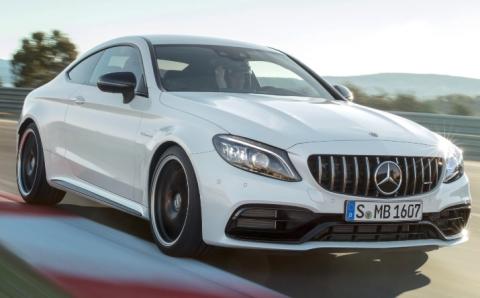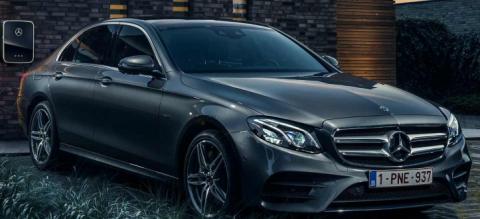With the world’s first public crash test involving two fully electric vehicles, Mercedes-Benz is going above and beyond not only the legal requirements but also those of the ratings industry. Euro NCAP stipulates a frontal impact test using a 1,400 kg trolley with an aluminium honeycomb barrier replicating the front of another vehicle. In accordance with the specifications, the test vehicle and the trolley collide with an overlap and at a speed of 50 km/h. Mercedes-Benz, however, used two real vehicles, an EQA and an EQS SUV, which are significantly heavier at around 2.2 and three tonnes respectively. In addition, both models were faster, each going 56 km/h, which meant that the overall crash energy was considerably higher than required by law. The vehicles’ extensive deformation following the collision may seem alarming to the non-expert. For the Mercedes-Benz engineers, however, it shows that the vehicles were able to effectively absorb the energy of the collision by deforming. As a result, the passenger safety cell of both electric models remained intact and the doors could still be opened. In an emergency, this would make it possible for occupants to exit the vehicle on their own or for first responders and rescue personnel to reach them. The high-voltage system in the EQA and the EQS SUV switched off automatically during the collision.
The crash test at the Group’s Technology Centre for Vehicle Safety in Sindelfingen demonstrates Mercedes‑Benz’s real-life safety philosophy: To make cars that hold up not only in defined crash test scenarios, but also in real-life accidents. The test scenario involving a speed of 56 km/h and 50 percent frontal overlap corresponds to a type of accident common on rural roads, for example during a failed overtaking manoeuvre. The speed selected for the test takes into account that, in a real-life accident, the drivers would still try to brake before the worst case of a collision.
Do you like it?
Comment, like, dislike, share!
–
Follow us: https://www.youtube.com/channel/UCW2OUlFrrWiZvSsZRwOYmNg
Join us to enjoy exclusive benefits: https://www.youtube.com/channel/UCW2OUlFrrWiZvSsZRwOYmNg/join
✅ Source: Mercedes-Benz
The crash test at the Group’s Technology Centre for Vehicle Safety in Sindelfingen demonstrates Mercedes‑Benz’s real-life safety philosophy: To make cars that hold up not only in defined crash test scenarios, but also in real-life accidents. The test scenario involving a speed of 56 km/h and 50 percent frontal overlap corresponds to a type of accident common on rural roads, for example during a failed overtaking manoeuvre. The speed selected for the test takes into account that, in a real-life accident, the drivers would still try to brake before the worst case of a collision.
Do you like it?
Comment, like, dislike, share!
–
Follow us: https://www.youtube.com/channel/UCW2OUlFrrWiZvSsZRwOYmNg
Join us to enjoy exclusive benefits: https://www.youtube.com/channel/UCW2OUlFrrWiZvSsZRwOYmNg/join
✅ Source: Mercedes-Benz
- Category
- AMG

![Mercedes GLC 300e electric range: city, highway, real-life test mpkWh kWh/100 km PHEV :: [1001cars]](https://www.merzedes.eu/tvp/templates/echo/img/echo-lzld.png)






Comments